- All the best bits from Porsche 911..
- …rolled into one, limited-run car
- Is it as good as it sounds?
It’s hard to imagine not liking the Porsche 911 Sport Classic – a rear driven, manual widebody Turbo with houndstooth upholstery, brown seats and wood trim. There’s a ducktail on the back, Fuch-a-like wheels on the side and a historic Porsche crest on the nose.
A supergroup of elements rivalling the Jordan-era Chicago Bulls, this limited-edition sports car has been styled as a celebration of the late 1960s and early 70s – specifically the 1972 Carrera RS 2.7 – and is the second of four retro-look collectable 911 models.
But it’s very expensive – a lot more than even a Turbo S – and that means it’s hard to not be a little bit cynical. If all you want is a rear driven, manual 911 then the Carrera GTS is nearly £100,000 cheaper. Even a GT3 looks like a bargain.
But to apply rational thinking to a car like this would be missing the point, so let’s park that for now.
Who is the Sport Classic for?
Not that many people, given the limited run of 1250 cars. However, that’s more than the last 997-era Sport Classic and a deliberate move to ensure they don’t all get locked away in garages, to accumulate value like a bottle of Petrus.
To be properly exclusive the Sport Classic needs its own space in the 911 range – no easy feat given the number of combinations and permutations of engine, driven wheels, roof configuration and body style offered by Stuttgart.
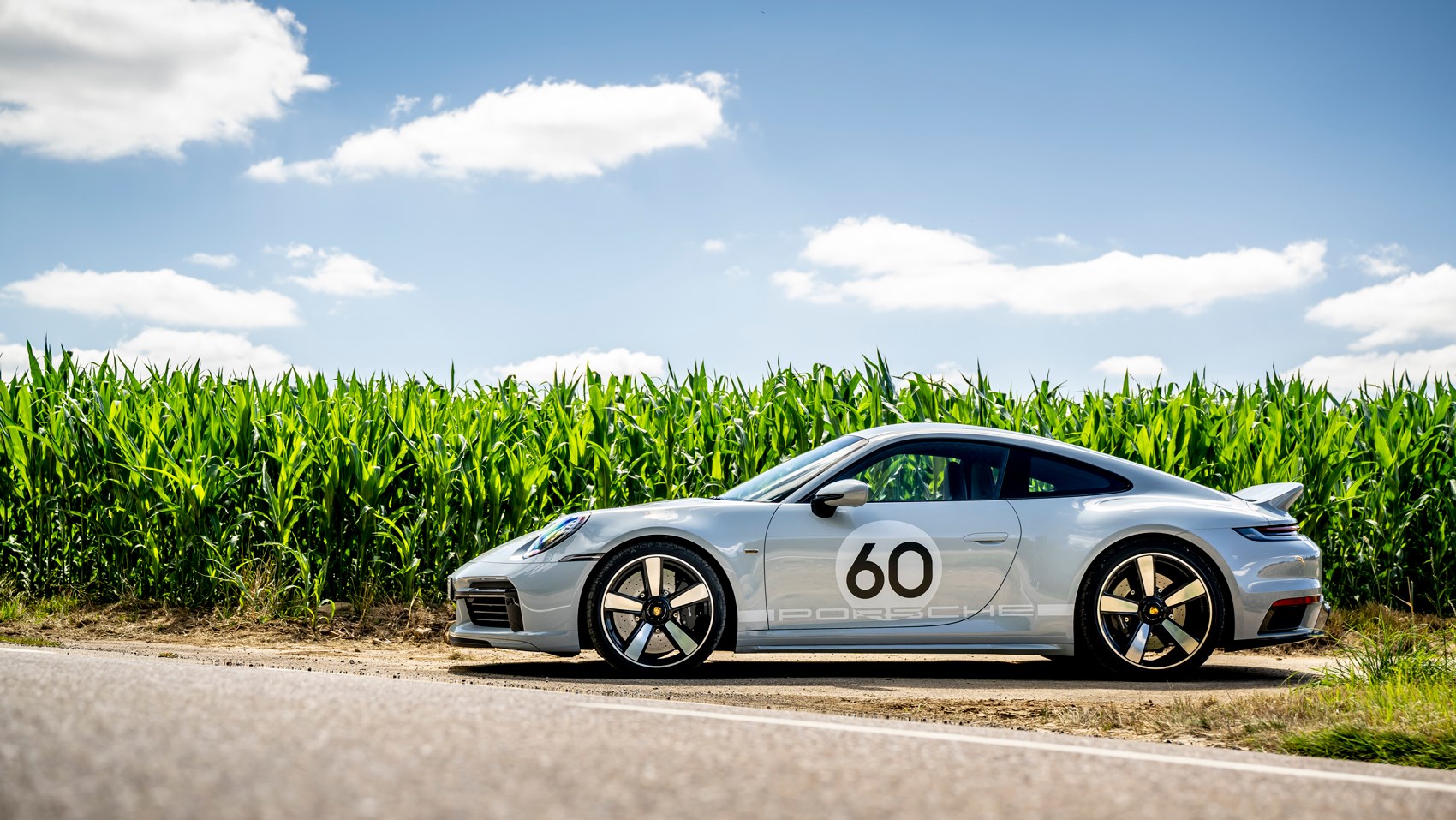
There’s already a 3.0-litre 911 with a manual box and two-wheel drive in the form of the GTS, so that’s out, and the GT3 Touring fills a similar hole but with a 4.0-litre flat six. That leaves the 3.7-litre unit from the Turbo and Turbo S.
Here we find a winner – not if howling redline thrills are a priority, but an obvious starting point if you want to create the most powerful three-pedal 911 on sale. Until now there was no two-wheel drive Turbo or widebody GTS – the Sport Classic is both.
Niche plugger or identity crisis?
The 911 Turbo is an Olympic-level sprinter so naturally talented it doesn’t have to work very hard to go fast, and as a result it has a much more relaxed character than you’d expect from a coupe with nearly 600bhp. You don’t use peak power very often, but you’re always aware of it being there, and that feels good in the way a highly strung NA motor does not.
That same sensation has been passed down to the Sport Classic, with a few horses galloping off along the way, and the slower (than PDK) manually shifts, plus need to manually manage grip to the rear wheels, makes you take another step back from the ragged edge.
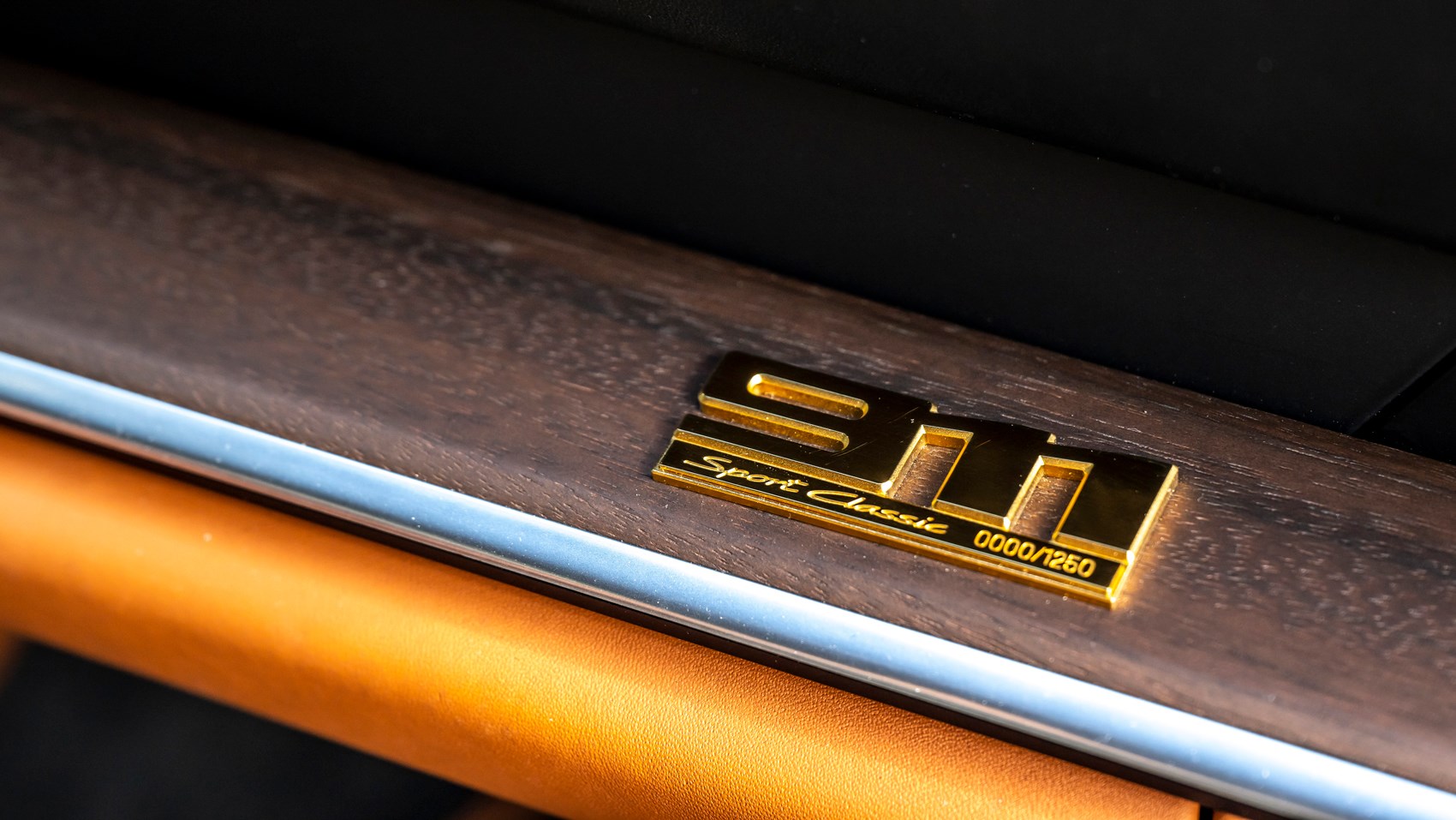
Porsche’s marketing video for this car doesn’t feature a Nürburgring assault or a tarmac rally along an Alpine pass, instead we get models dressed in 60s fashion cruising along coastal hairpins to the sound of Shirley Bassey. And it manages an extremely satisfying waft for a near-200mph sports car with old-school charm and a well of ability so deep not even Shell could tap it.
What’s it like to drive?
Not as fast off the line as a 911 Turbo, because you have to shift gears yourself and there’s no all-wheel drive, but when you’re up and running you won’t miss the 30-odd bhp or additional traction of that system.
Flatten the gas below 2,000rpm if you want to feel the full force of the two turbochargers – a raw and mechanical soundtrack accompanies a surprising lack of forward momentum, before the revs build and a rush of torque pulls you hard until the redline.
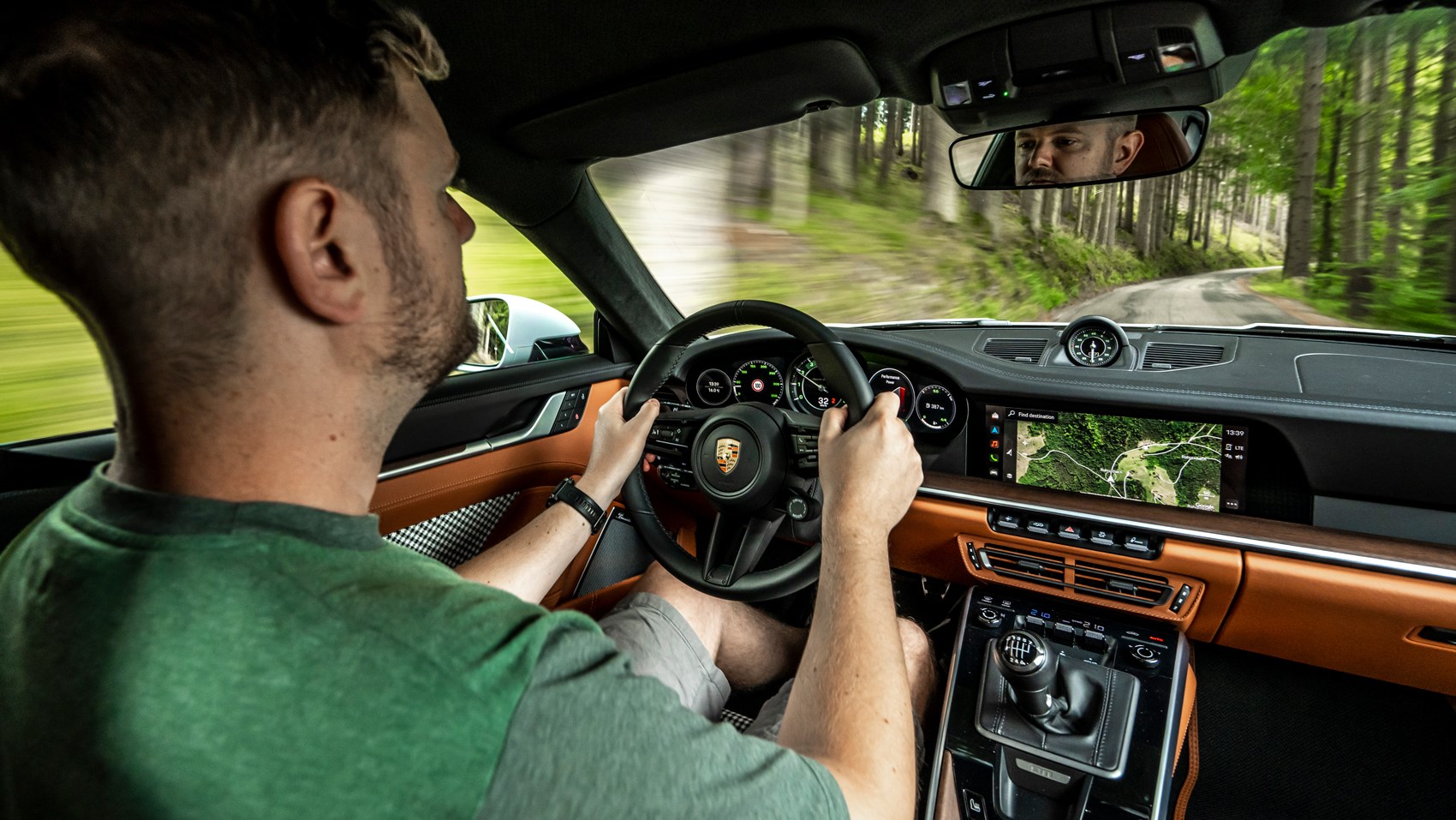
The manual box means it’s easy to stay locked into that broad powerband, and the seven forward ratios feel well-matched to the engine. Well, six of them do, with the last only really necessary for long motorway hauls. Navigating between that many gears does take some getting used to, even if a special gate stops you accidentally slotting top when you want fifth.
An autoblip function in Sport and Sport+ modes boosts stability on downshifts and can be turned off if you’d rather do this yourself, and the pedals are neatly spaced for heel and toe if that’s your preference.
What about the handling?
Huge tyres on offset 20/21-inch wheels deliver so much grip that you’d need a very wide road and casual approach to speed limits to trouble the chassis. The waning edge of grip can be found if you provoke it, and the rear end is satisfyingly responsive and approachable. Adjustments can be made to your cornering angle with great confidence.
In the dry at least this does make you question whether all-wheel drive is ever strictly necessary – the Sport Classic still feels tied down unless you’re trying quite hard and you’re unlikely to get beyond that point by accident. The steering isn’t suddenly improved by losing two driveshafts though, as it was already quite good, but offers up quick direction changes straight off the bat and as much feel as you can reasonably expect these days.
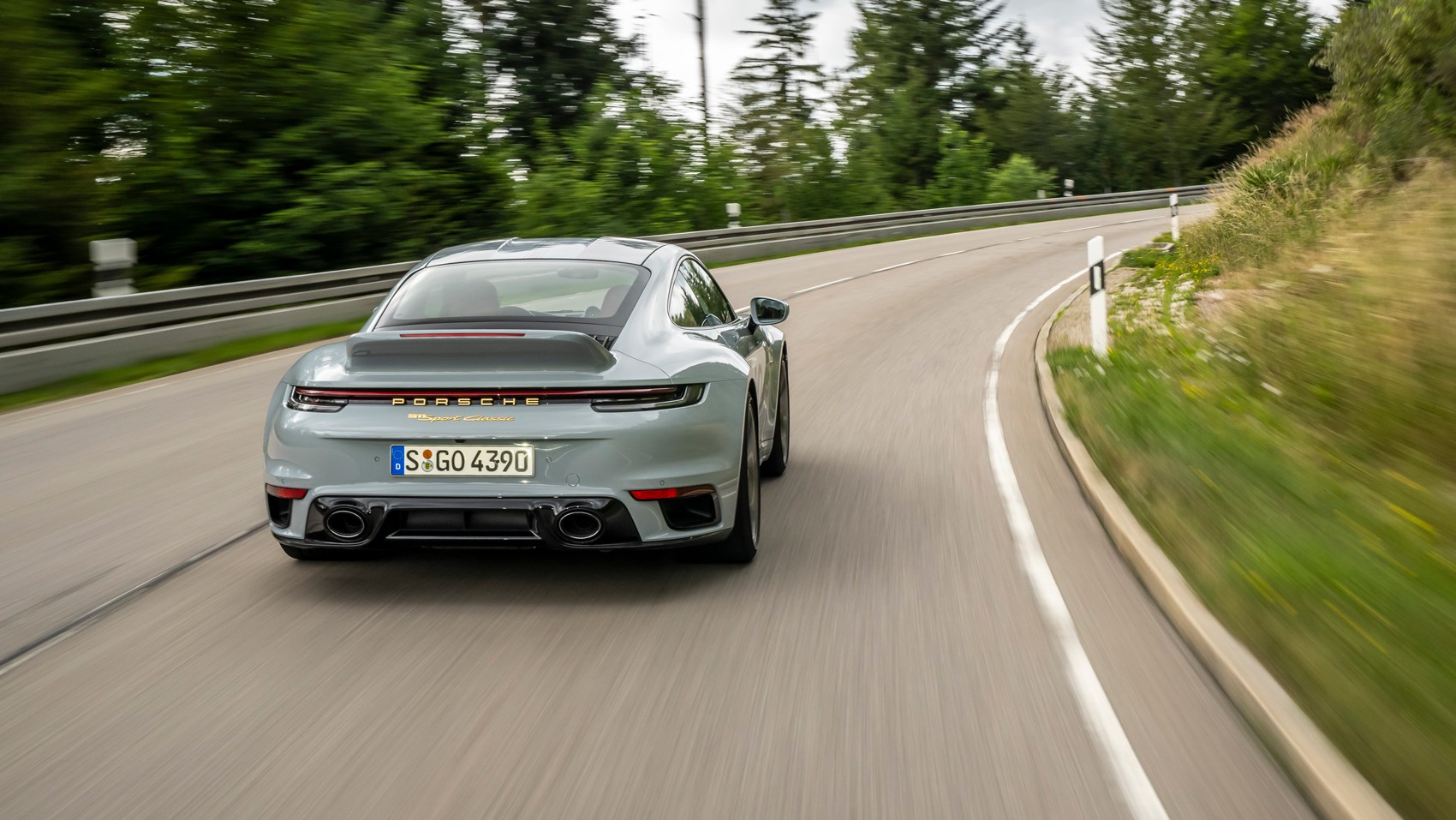
Not that it’s specific to this 911, but the way the body remains flat in successive corners while offering up a usable ride on all but the worst surfaces, feels like witchcraft. Being a widebody car, the Sport Classic sits quite large on the road, and this only adds to the bemusement its composure drums up. Particularly when you lean hard on the standard Porsche Ceramic Composite Brakes and your face feels like it’s about to detatch.
Talk to me about the styling
A bit like a Hollywood movie reboot, this car comes with plenty of classic throwbacks that fans of the genre will delight in discovering – the double-bubble roof and bonnet for a start, requiring new and expensive carbon-fibre-reinforced plastic panels.
Out back that classic ducktail spoiler sits in front of a huge air inlet, highlighting the fact the normal cooling slashes down the side of the bodywork you see on a Turbo or Turbo S are absent. The bodylines are subsequently much cleaner and that means this 911 looks like no other. It looks brilliant, in fact, full of stance but uncluttered.
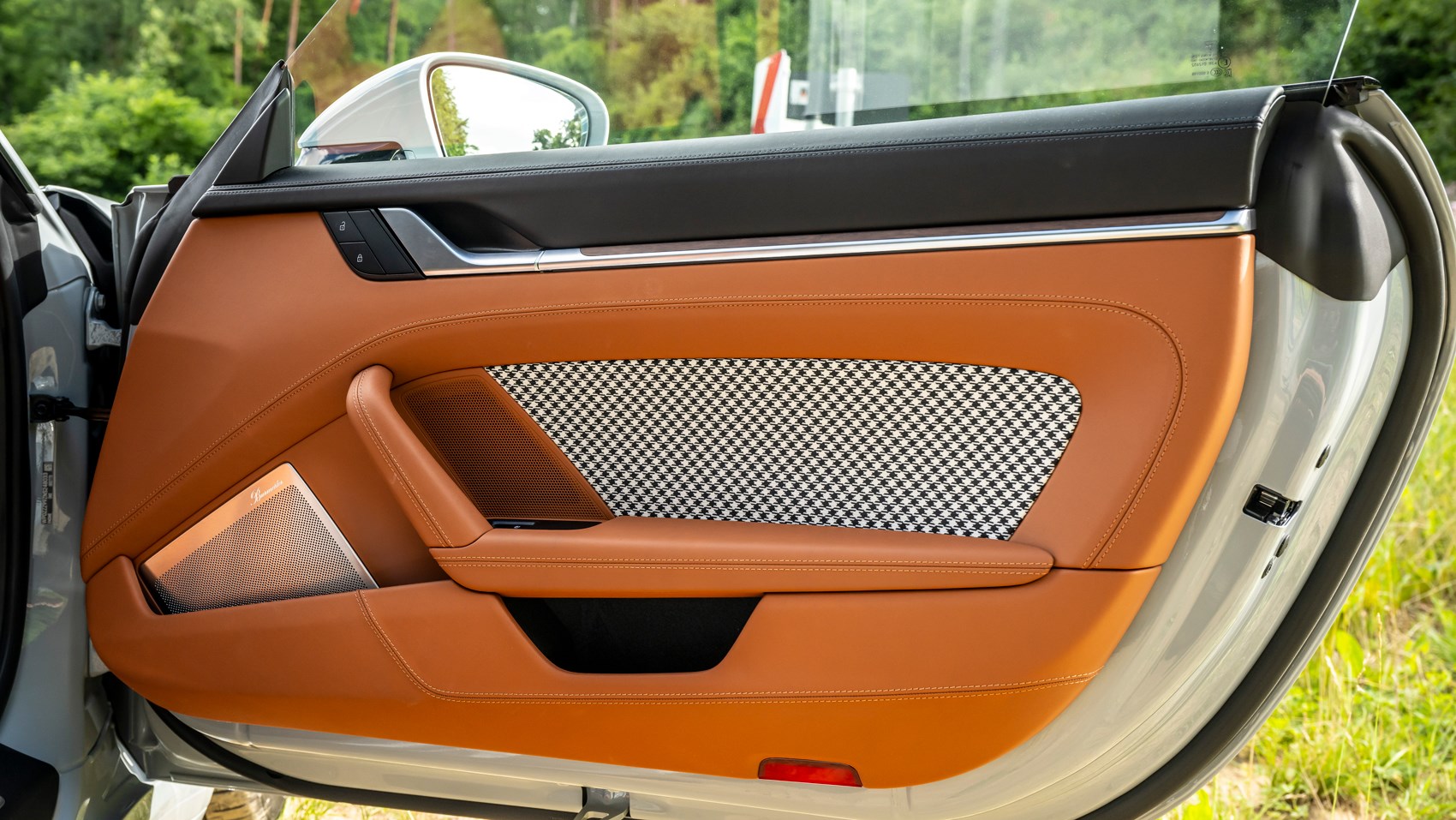
Inside you’re treated to Pepita houndstooth fabric (from 1965) and Cognac leather for a very traditional pairing – and you can team this with open-pored wood for the full “motoring journalist speccing a long termer” look.
On the more subtle end of the spectrum is the green ringed rev counter (inspired by the Porsche 356) with subsequent rings denoting where the engine is most on song, and faintly green glowing numbers.
None of these things is particularly ground-breaking, but combined they make for a very different look and feel to your standard 911. It’s the subtle details that do it, and on that note, you don’t have to have the racing number on the doors if you don’t want it.
Porsche 911 Sport Classic: verdict
Like I said, this isn’t a car that can be approached as a rational purchase – it’s half performance car and half design showcase. A 911 to be enjoyed visually as much as experientially.
However, giving it rear-wheel drive and a manual gearbox layout naturally points it towards more enthusiastic drivers. The limited production number lends itself to a garaged-existence, only being brought out for special occasions. So that’s an odd contradiction.
And finally, the price rules this out as a sensible thing to recommend – forget cars from McLaren, Audi and Ferrari for a moment – the Sport Classic’s biggest rivals come from faster and more capable Porsches further down the 911 range.
But driven away from all of those existential considerations, the Sport Classic is absolutely sensational. Not because it can carry more corner speed or shave tenths off the 0-62mph sprint, but because it takes you somewhere no other current 911 can – deep into the past to a time before dual-clutch gearboxes, Alcantara, and active centre differentials.
Best to view it as an off-the-shelf restomod, a car with all the styling charm of the past but the conveniences of modern tech and 60 years of chassis development – a Porsche greatest hits, that when combined takes on a character all of its own. Peak 911? No, but somehow better for it.